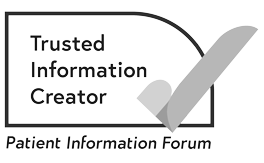Chemotherapy for liver cancer
About chemotherapy for liver cancer
Chemotherapy uses anti-cancer (cytotoxic) drugs to destroy cancer cells.
Chemotherapy for primary liver cancer (also called hepatocellular carcinoma or HCC) is usually given directly into the blood vessel that carries blood to the liver. It is often used together with a treatment that blocks the blood supply to the tumour. This is called chemoembolisation.
This information is about chemotherapy given into a vein (intravenously) or taken by mouth as tablets.
Giving chemotherapy into a vein (intravenously) or as tablets is a much less common way of treating HCC. It may be used to try to control the tumour and reduce symptoms. It is not suitable for everyone. The liver may not be working well enough to cope with chemotherapy drugs.
You might have a combination of the chemotherapy drugs oxaliplatin, leucovorin and fluorouracil (5FU). This is called FOLFOX for short.
Getting support
We understand that having treatment can be a difficult time for people. We are here to support you. If you want to talk, you can:
- Call the Macmillan Support Line for free on 0808 808 00 00.
- Chat to our specialists online.
- Visit our liver cancer forum to connect with people who have been affected by liver cancer, share your experience, and ask your questions.
How chemotherapy is given
Chemotherapy is usually given into a vein (intravenously) or taken as tablets.
Your doctor or nurse will tell you how you will have chemotherapy. You usually have chemotherapy on 1 or more days, followed by a rest period of a few weeks. This is called a cycle of treatment.
The rest period lets your body recover from the side effects before you start your next treatment cycle. Your doctor or nurse will tell you how many cycles of treatment you will have.
Side effects of chemotherapy
Your cancer doctor and specialist nurse will tell you about the likely side effects and how they can be managed.
If you are having chemotherapy directly into the liver, the side effects will be different. The side effects depend on which chemotherapy drugs you have. Different drugs cause different side effects.
Some side effects are mild and easy to treat. Others can be harder to manage but can often be reduced or helped in some way. Most side effects stop or slowly go away when chemotherapy finishes. Chemotherapy can also make you feel better by relieving the symptoms of the cancer.
We have more information about the side effects of chemotherapy
About our information
This information has been written, revised and edited by Macmillan Cancer Support’s Cancer Information Development team. It has been reviewed by expert medical and health professionals and people living with cancer.
-
References
Below is a sample of the sources used in our primary liver cancer information. If you would like more information about the sources we use, please contact us at informationproductionteam@macmillan.org.uk
ESMO Guidelines Committee. Updated treatment recommendations for hepatocellular carcinoma (HCC) from the ESMO Clinical Practice Guidelines. eUpdate. March 2021. Available from: www.esmo.org/guidelines/guidelines-by-topic/esmo-clinical-practice-guidelines-gastrointestinal-cancers/hepatocellular-carcinoma-esmo-clinical-practice-guidelines-for-diagnosis-treatment-and-follow-up/eupdate-hepatocellular-carcinoma-treatment-recommendations [accessed April 2023].
Huang QD, Teng MLP. Hepatocellular carcinoma – symptoms, diagnosis and treatment. BMJ Best Practice Guidelines. 2022. Available from: www.bestpractice.bmj.com/topics/en-gb/369 [accessed March 2023].
Vogel A, Cervantes A, Chau I, Daniele B, Llovet JM, Meyer T, et al. Hepatocellular carcinoma: ESMO Clinical Practice Guidelines for diagnosis, treatment and follow-up. Annals of Oncology. 2018;29(4): 238–255. Available from: www.doi.org/10.1093/annonc/mdy308 [accessed April 2023].
Date reviewed

Our cancer information meets the PIF TICK quality mark.
This means it is easy to use, up-to-date and based on the latest evidence. Learn more about how we produce our information.
The language we use
We want everyone affected by cancer to feel our information is written for them.
We want our information to be as clear as possible. To do this, we try to:
- use plain English
- explain medical words
- use short sentences
- use illustrations to explain text
- structure the information clearly
- make sure important points are clear.
We use gender-inclusive language and talk to our readers as ‘you’ so that everyone feels included. Where clinically necessary we use the terms ‘men’ and ‘women’ or ‘male’ and ‘female’. For example, we do so when talking about parts of the body or mentioning statistics or research about who is affected.
You can read more about how we produce our information here.





